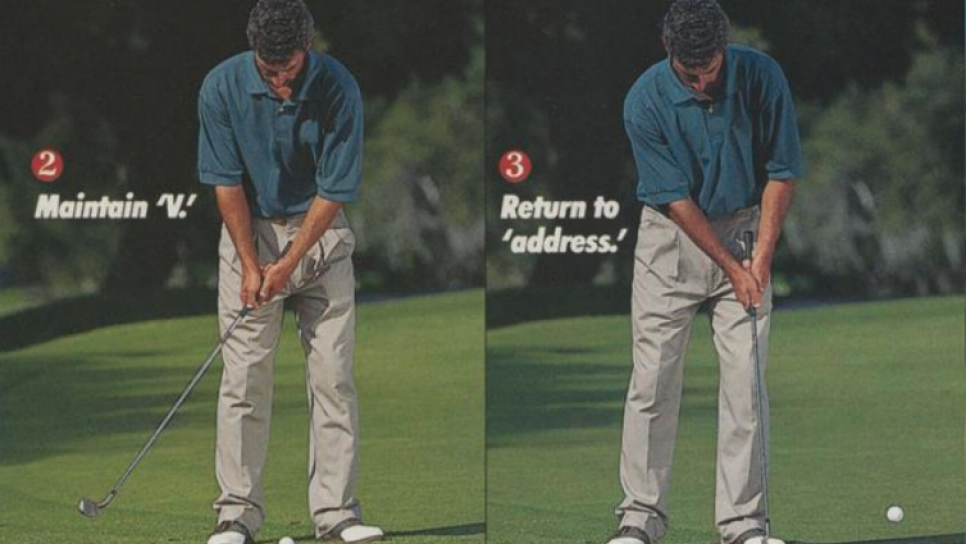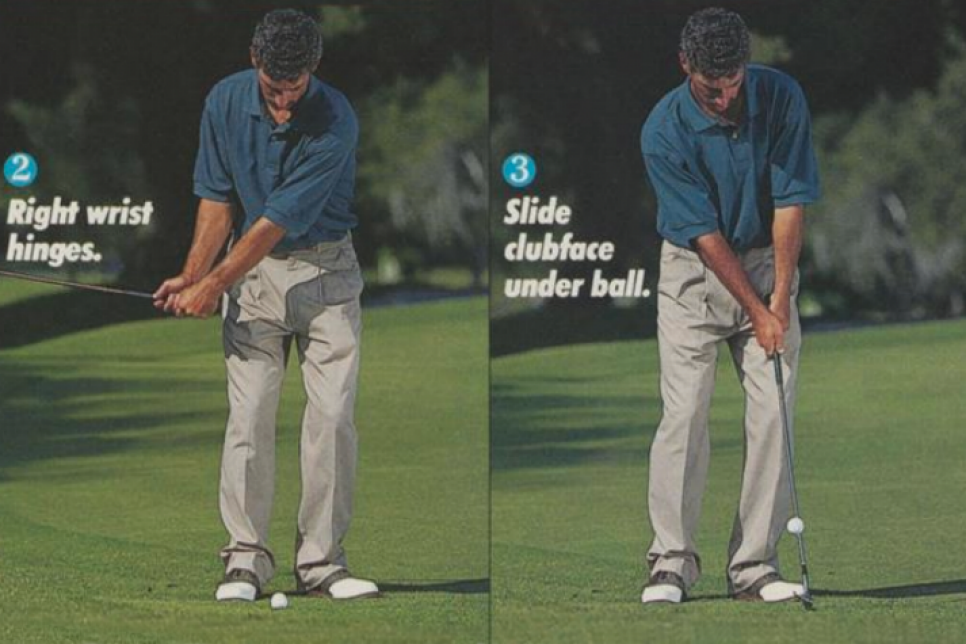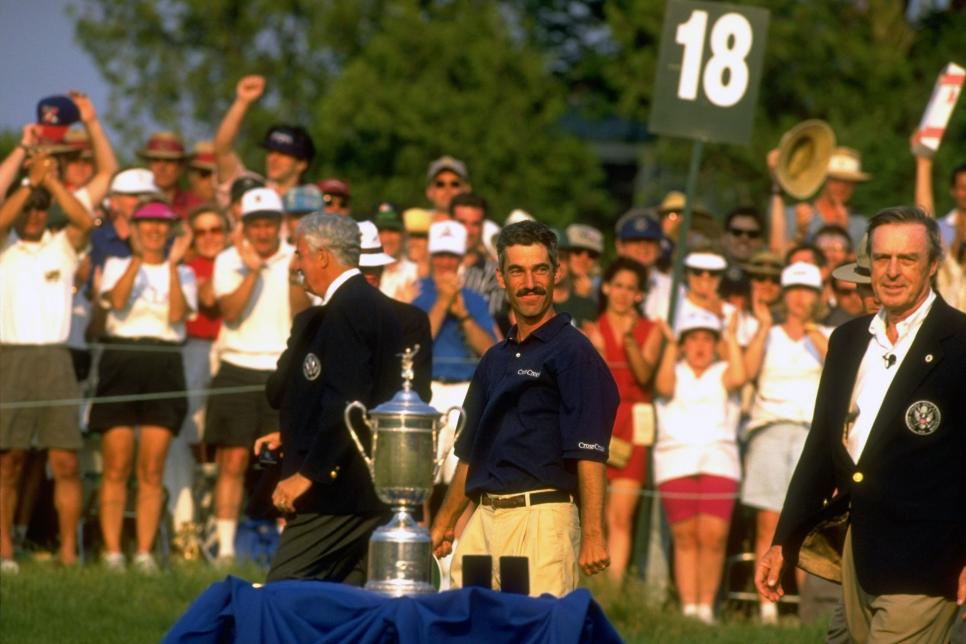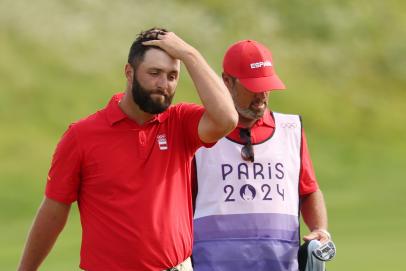|
Corey Pavin’s success on tour is a testament to the importance of accuracy over distance and exemplifies the old cliche, ‘Golf is a game of misses.’ Pavin, who wasn’t known for his length off the tee, made up for his shorter driving distance, 254.9-yard average, with his touch around the greens.
It was Pavin’s accuracy, short game and incredible 4-wood shot that helped him take down Greg Norman and capture his first major championship, the 1995 U.S. Open at Shinnecock Hills.
Simply put, Pavin was a grinder. And his scrambling ability led him to secure 15 PGA Tour wins throughout his career.
Heading into his career-best season, Pavin shared some of his top short-game tips with Golf Digest, and now we’re sharing his secrets for saving par with you. Follow along to find out his ‘rules’ for chipping and one of his favorite putting drills.
“The key to every chip shot is to get the ball on the green and running as soon as possible,” Pavin told Golf Digest in March of 1995.
You can check out that article, and more, in our Golf Digest Archive right here!
And according to Pavin, the key to achieving this is club selection.
“The vast majority of the time I use one of three chip shots. Each is played with a different club. Which one I play is dictated by the contours of the ground between me and the green and, sometimes, just how I ‘see’ the shot in my mind’s eye,” Pavin says.
HOW TO HIT PAVIN’S LOW-RUNNER
Two of Pavin’s go-to shots around the green are low, running chips. The difference between them is just club selection. One is hit with his 6-iron while the other is hit with his 8-iron. To pull off this shot, you just have to remember a few simple checkpoints:
- putting grip
- maintain ‘V’
- return to address
- short follow-through
The first step in Pavin’s chipping process is to grip your club like you would a putter.
“Minimal wrist action is involved. The only difference is that I play the ball a bit farther back for the 6-iron,” Pavin says.

His next step is to form a ‘V’ with your shoulders and arms, pictured above.
“The length of the shot dictates the length of the backswing,” Pavin says, “Think of it as a long putt. Maintain the ‘V’ formed by your shoulders and arms.”
From here, Pavin says to accelerate through impact as you continue to maintain the ‘V’ position from the previous step. A good way to check that you’re executing this shot correctly is to check that your impact position matches your position at address.
Lastly, Pavin says to keep your follow-through short.
“This is more of a stabbing, punch-type shot than a swinging motion,” Pavin says.
As you work on this shot, remember the goal is to get the ball on the ground as quickly as possible.
MASTER PAVIN’S HIGH, SOFT SHOT
The third stock chip in Pavin’s short-game repertoire is the high, soft shot. And his keys for hitting this shot are just as simple as his low runner:
- Select a lofted club
- Hinge your wrist
- Slide the clubface under the ball
- Accelerate through the finish
The first step to mastering this shot is selecting the right club. Pavin’s go-to to pull this off was his sand wedge. Before pulling the trigger, Pavin says to remember two things: loosen your wrists, and play the ball slightly back of center—about where it was for the low-running chip.
Next, take the club back and allow the back of your trail wrist to hinge.
“Because this shot pops up, lands more softly, and doesn’t run as far, you need to hit the ball harder. So you need a longer swing,” Pavin says.

When done properly, your wrist should almost create a right angle, like Pavin’s in the picture above.
From here, think about sliding the club under the ball. Pavin says to keep your clubhead accelerating.
“Decelerate and you’re dead,” Pavin says.
The final step for this shot is to keep your speed into the finish and allow yourself to make a longer follow-through.
When practicing this shot, just remember to keep your speed, and you’ll pull it off every time.
PUTT TO THE CUP: PAVIN'S LAG PUTTING DRILL
If you struggle to lag your putts close, Pavin’s drill can help you develop your feel and distance control. Start by dropping a few balls 20 feet from the hole. The goal of this drill is to finish each putt even with the cup. After you hit each putt, keep your head down and try to guess if you’ve left it short, long or just right.
As you practice this drill, you should notice that you can start to identify where you’ve hit each on the face and if your stroke was consistent. When you feel like you’ve gotten the hang of it, work your way back to 30 feet, 40 feet and so on. With this practice drill in your arsenal, you’re sure to become a two-putting machine.
Once again, you can dive into our Golf Digest Archive right here!








No comments:
Post a Comment